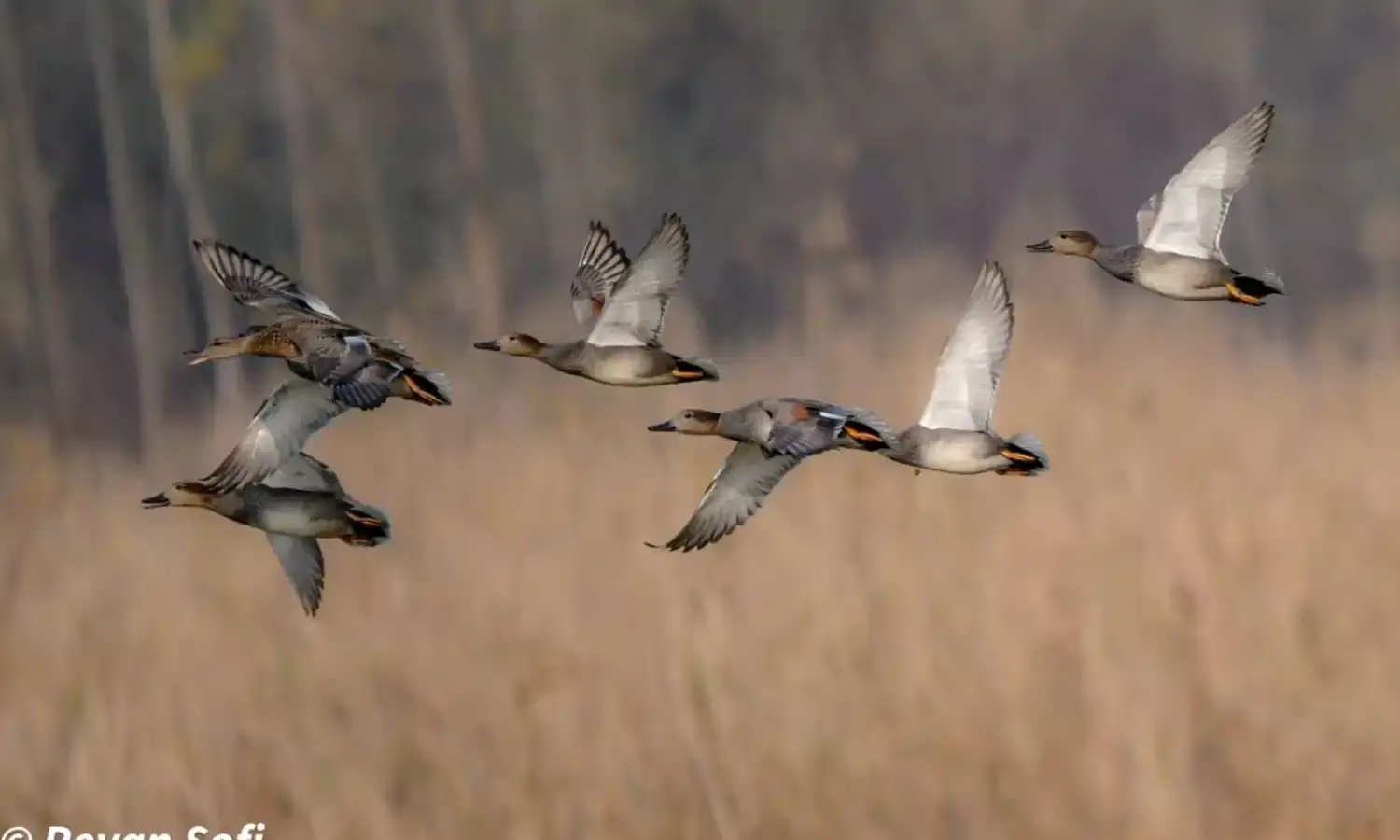Saving Hokersar, Kashmir's Largest Wetland
Wetland area has decreased from 18.75 sq km in 1969 to 13.00 sq km in 2008;

A group of young boys, and a man in his early 70s are sitting on the banks of Hokersar, Kashmir's biggest wetland. Ghulam Asghar, (70, name changed on request) a resident of Sozait Budgam says he regularly sees bird poachers venturing out into the protected wetland to hunt migratory birds. "I still remember the days when Hokersar wetland hosted around six lakh migratory birds that flock here during winter. The number has reduced over the years due to excessive poaching and drastic climate change," Asghar, told the Citizen.
He recalled that some years ago, gunshots fired by packers were regularly heard along the banks of Hokersar. According to Mohiuddin, another local, gunshots are typically heard in the early morning and evening hours.
However, Wildlife (Wetland) Warden Kashmir, Afshan Dewaan told the Citizen that over the years the poaching of migratory birds has been curbed by the department. "We have set up control rooms which monitor the activities of bird poachers in the area. We accordingly take time bound action against those who are found involved in migratory bird poaching, " Deewan told The Citizen.
The marshy wetland is surrounded by villages and is located 12 kilometres from the west of Srinagar. Waterfowl and wading birds that migrate there each winter from Siberia, China, Central Asia, and Northern Europe visit the wetland.
One of the four Himalayan wetlands designated as Ramsar areas, or wetlands of "international importance," by an international convention, is Hokersar. The Wular, Tso Moriri, and Surinsar-Mansar Lakes make up the other three. Thousands of migratory birds travel through inclement weather and strong winds every year to spend the winter near these ecosystems.
Ghulam Qadir Dar (47) who lives near the Hokersar wetland told The Citizen that he has seen lakhs of migratory birds in the wetland during winters in the past. "For the last five to seven years, I could hardly see 50,000 migratory birds. The area lost its place as a natural habitat of migratory birds when the devastating 2014 floods wreaked havoc in the wetland's ecosystem," said Qadir.
Hokersar wetland was initially declared as a conservation reserve under the Jammu and Kashmir Wildlife Protection Act of 1978, and later in 2005, the reserve was recognised as a wetland of international significance under the Ramsar Convention, to which India is a party.
Another resident, Mohd Shaban (28), told The Citizen that Hokersar has seen significant degradation. According to him, the primary cause is the shift in land use over the past few years that has affected both the make-up and functionality of the wetland.
"Uncontrolled urbanisation, encroachment, and population pressure all contribute to the destruction of the area. The amount of eutrophication has also increased due to the use of hazardous chemical fertilisers and pesticides, which posed a serious threat to aquatic life," said Shaban.
The Wetland area has decreased from 18.75 sq km in 1969 to 13.00 sq km in 2008, losing 5.75 sq km during the past 40 years, according to a study done by the Department of Earth Science under the direction of Prof. Shakil Ramshoo.
Over the years, paddy cultivation has increased across a huge region that was previously a wetland. Domestic garbage is being discharged into wetlands, and the department seems to be nonchalant.
Reyan Sofi (25) a bird watcher who has documented 272 migratory species since 2014, claimed that many birds are now skipping the area owing to the wetland's poor condition. "Many birds, including Smew ducks and greylag geese, are not arriving here because of the destruction of our wetlands," he said.
"Hokersar was a resting place for many birds, and I believe that over a million of them used to come there annually. However, a significant amount of the marsh has dried up as a result of the dredging done by the flood and irrigation department," added Sofi.
To replenish Hokersar, Kashmir's largest wetland, authorities have reopened a water channel with great environmental significance that had been silted up for the past 40 years.
The channel is anticipated to breathe new life into the 13.54 sq km wetland in the Srinagar and Budgam districts of central Kashmir that has been suffering from low water levels.
The Citizen spoke to Wildlife wetland warden Kashmir, Afshan Dewaan who said that the department has set up anti poaching squads in different wetlands. So far they have been successful in lodging FIRs against encroachers and bird poachers.
"I cannot say that the poaching of migratory birds in wetlands has been fully stopped. There might be some incidents of poaching in and around wetlands. But all in all our department is on toes to take stern action against the poachers," said Dewaan. On being asked about the water shortage in wetlands, she said that the department is creating pools that can easily restore the migratory birds' habitat.
She said that around 20,000 migratory birds have so far arrived at the Hokersar Wetland. "Birds begin to arrive in Kashmir around October and remain there through the end of March," she said. According to Dewan ten lakh migrating birds are expected to arrive in the wetlands of Kashmir.

